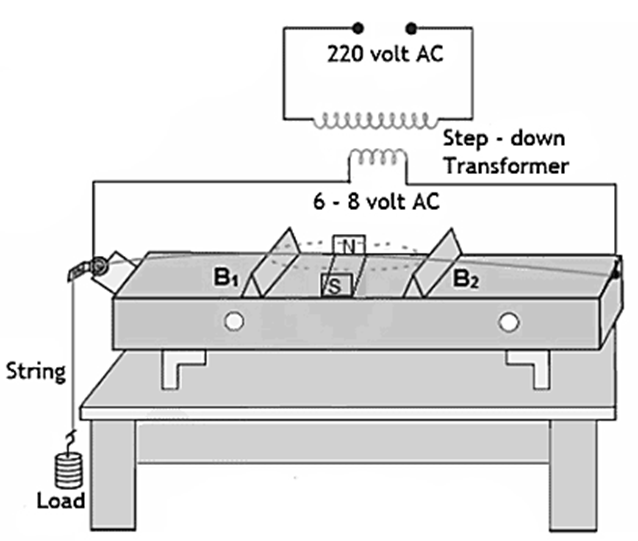
In the second year of the B.Sc. Physics program following the TANSCHE curriculum, students get to dive into various experiments that connect theoretical ideas with real-world observations. One key experiment is the Sonometer – A.C. Current Frequency experiment, which is a basic task aimed at measuring the frequency of alternating current (A.C.) using a sonometer.
This experiment gives students the chance to investigate how the frequency of A.C. relates to the resonating frequency of a wire that is stretched across the sonometer. By engaging in this hands-on activity, students gain a better grasp of wave mechanics, resonance, and alternating currents. This blog post will guide you through the step-by-step process of conducting the Sonometer experiment to measure A.C. current frequency, ensuring a clear and organized method for achieving accurate and successful results.
A.C frequency - Sonometer
Aim:
To determine the frequency of a.c. mains source using a sonometer.
Apparatus required:
Sonometer, low voltage step down transformer, magnets, weight hanger with weights, knife edges, metre scale, paper rider etc
Formula:
Hz)
Here,
n is the frequency of the tuning fork Hz
l is the length of the vibrating segment m
M is the weight loaded on the hanger kg
g is the acceleration due to gravity m/s2
m is the linear density of the string kg/m
Procedure:
One end of the sonometer wire is attached to one side of the sonometer, while the other end goes over a smooth, frictionless pulley and is pulled tight with a constant low weight of about 100 grams. The wire is positioned between two equal bar magnets, creating a magnetic field that runs horizontally and is perpendicular to the wire's length.
The ends of a transformer’s secondary coil are connected to both ends of the wire, and the voltage across the transformer should be around 6 volts. Initially, the tension in the wire is set to 150 grams. The key is then plugged in, causing the wire to vibrate clearly.
The length of the wire is adjusted by moving the bridges B1 and B2 until a single loop with the largest amplitude is visible between them. The distance between the bridges is measured using a meter scale.
This process is repeated for tensions of 200, 250, 300, 350, 400, 450, and 500 grams, and the vibrating length is recorded for each tension. The linear density (m) of the wire is determined by weighing a known length of it, and all observations are organized in a table.
Tabular Column 1: To find the 
S.No | Mass M kg | Tension T=Mg N | Vibrating length m | 
|
|
|
|
|
|
|
|
|
|
|
|
|
|
|
|
|
|
Result:
The using sonometer the frequency of a.c mains is found to be as f = ___ Hz






0 Comments
It's all about friendly conversation here : )
I'd love to hear your thoughts!
Be sure to check back again because I do make every effort to reply to your comments here.
Please do not post your website link here.